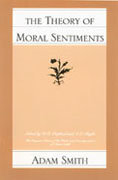This is the THIRD TIME I HAVE ASKED FOR HELP.
.3 $100 MG 580 /AC 570 560 $50 14060 Dresses per year 9. Refer to the graph above. The firm in this monopolistically competitive industry will; A. eam economic profits of $70,000 per year B. earn economic profits of $140,000 per year C. incur economic losses of $140,000 per year D. incur economic losses of $70,000 per year Price Quantity 10. Refer to the graph above depicting a monopolistically competitive fir. The marginal cost curve is represented by curve B. B.5 . Student: Price $18 300 600 700 BOU Quantity per day 1. Refer to the graph above. If this monopolist sets the price to maximize profit it will charge: A. $16 for its product. B. $12 for its product. C. $8 for its product. D.510 for its product. 2. A significant difference between monopoly and competition is that, A. free entry and exit is possible in a monopolized industry but impossible in a competitive industry. B. competitive firms control market supply but monopolies do not, C. the monopolist's demand curve is the industry demand curve while the competitive firm's demand curve perfectly elastic. D. profits are driven to zero in a monopolized industry but may be positive in a competitive industry. 3. A price-discriminating monopolist will produce an output I A. below that of a normal monopolist. B. the same as that of a normal monopolist. C.above that of a normal monopolist D. above that of a competitive marketATC AVG ABCD MR Quantity 4. Refer to the graph above, A monopolist would most likely produce the quantity shown by A. A, B. B. C. C. D. D. 5. A movie theater is a price discriminating monopolist and charges a higher ticket price for late evening showings. From this we know that; A. Late evening moviegoers have perfectly inelastic demands B. Late evening moviegoers have less elastic demands than daytime or early evening moviegoers. C. Late evening moviegoers have more elastic demands than daytime or early-evening moviegoers D. Daytime and early-evening moviegoers have perfectly elastic demands. 6. When a company holds a patent on a life-saving drug, government could ensure the availability of th affordable prices without reducing incentives for future development in the pharmaceutical industry by A. forcing the company to charge a price equal to marginal cost. B. purchasing the patent from the company and allowing anyone to make the dog. C. establishing an effective price calling in this market, D. taxing away the positive economic prodteamed by the.company 7. For a monopolist to eam an economic profit in the long run, which of the following must happen? A. There are barriers to entry. B. Average total costs must fall. C. Welfare loss due to monopoly must increase D. Fixed costs must be eliminated 8. Monopoly is a market structure where A. one fin makes up the entire madiet. B. a few firms dominate the markter. C. many firms produce differentiated products D. many firms produce identical products









